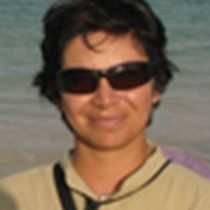Santa Cruz Island
Today we went to Puerto Ayora which is the largest town in the Galapagos archipelago and the home of the Charles Darwin Center (CDRS).
We had a great time observing the most emblematic animal from the archipelago, the Galápagos giant tortoises. We also were able to identified two types of tortoises; one with a dome shape carapace (shell) and the one with a saddle-back shape; both of them inhabit the archipelago on different islands.
The one we found on Santa Cruz was a dome shape. They are commonly found in places where the vegetation is abundant. The tortoises with shells that looks like a saddle are found on low, arid islands. They ten to have slightly longer legs and necks, which allows them to reach the higher leaves on the bushes. This also causes more skin exposure allowing the tortoise to cool off quicker.
Today we also experienced the very beginning of the dry-cold season. We felt a strong breeze coming from the south and the presence of mist (locally known as “Garua”). The Garua sits on top of the island, bringing the much needed water for the plants and land birds that inhabit this region in the archipelago. We also experienced some of that "Garua" while walking through the giant daisy forest.
Once we reached higher altitudes, we seemed to be in a different world abundant with very tall trees and grasses. The moisture in the highlands allows mushrooms, lichens, Galápagos orchids, mosses, and ferns of different species to spread easily. We found several species of Darwin’s finches flying around us. We were also very lucky to observe the woodpecker finch, which uses little twigs and spines to get insects out of the bark of trees. This behavior makes the woodpecker finch one of the few animals in the world that use a tool to obtain food.
We returned back to the ship after this exciting day in paradise.
Today we went to Puerto Ayora which is the largest town in the Galapagos archipelago and the home of the Charles Darwin Center (CDRS).
We had a great time observing the most emblematic animal from the archipelago, the Galápagos giant tortoises. We also were able to identified two types of tortoises; one with a dome shape carapace (shell) and the one with a saddle-back shape; both of them inhabit the archipelago on different islands.
The one we found on Santa Cruz was a dome shape. They are commonly found in places where the vegetation is abundant. The tortoises with shells that looks like a saddle are found on low, arid islands. They ten to have slightly longer legs and necks, which allows them to reach the higher leaves on the bushes. This also causes more skin exposure allowing the tortoise to cool off quicker.
Today we also experienced the very beginning of the dry-cold season. We felt a strong breeze coming from the south and the presence of mist (locally known as “Garua”). The Garua sits on top of the island, bringing the much needed water for the plants and land birds that inhabit this region in the archipelago. We also experienced some of that "Garua" while walking through the giant daisy forest.
Once we reached higher altitudes, we seemed to be in a different world abundant with very tall trees and grasses. The moisture in the highlands allows mushrooms, lichens, Galápagos orchids, mosses, and ferns of different species to spread easily. We found several species of Darwin’s finches flying around us. We were also very lucky to observe the woodpecker finch, which uses little twigs and spines to get insects out of the bark of trees. This behavior makes the woodpecker finch one of the few animals in the world that use a tool to obtain food.
We returned back to the ship after this exciting day in paradise.




